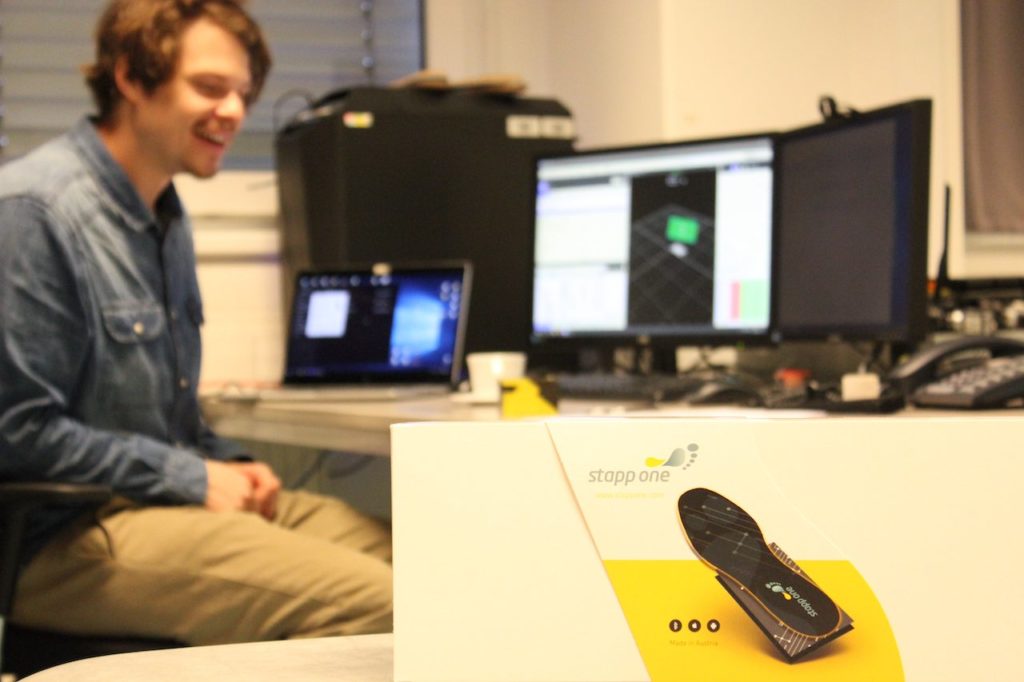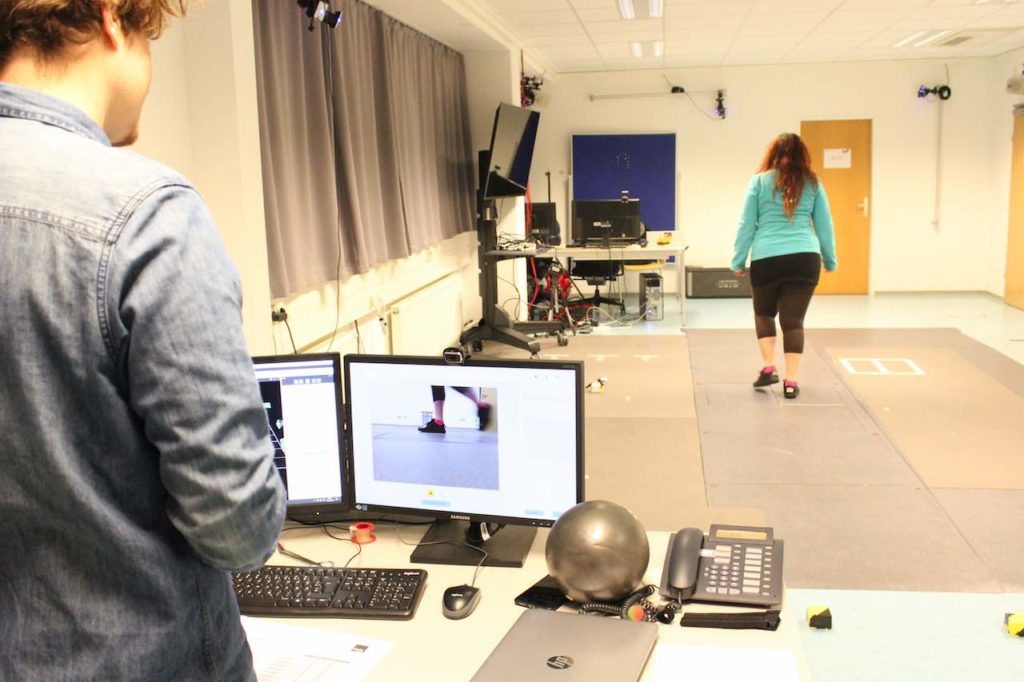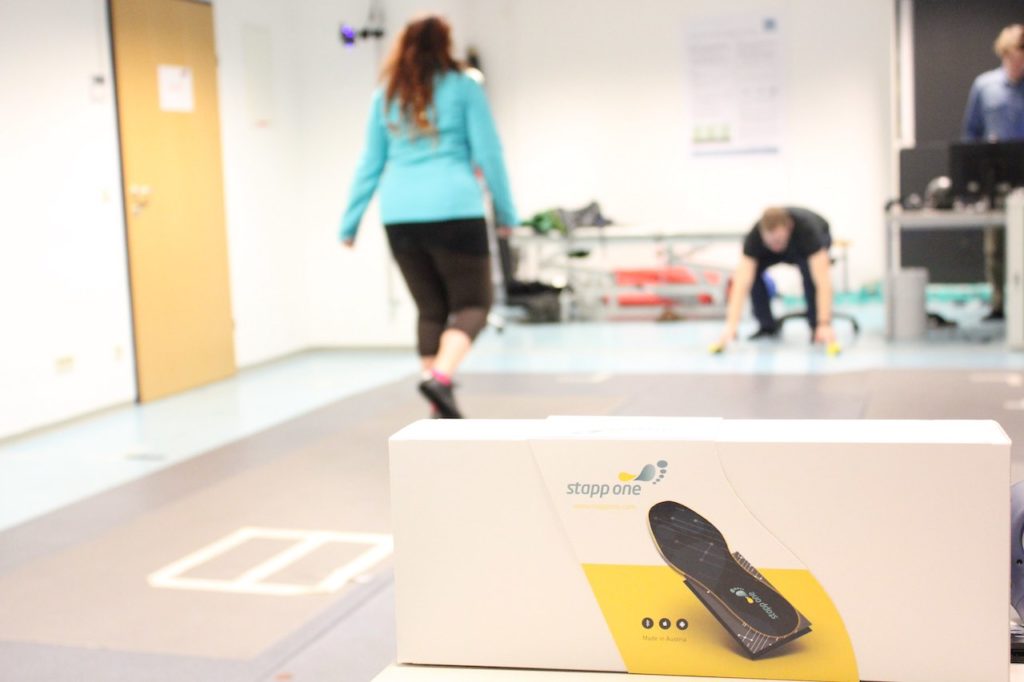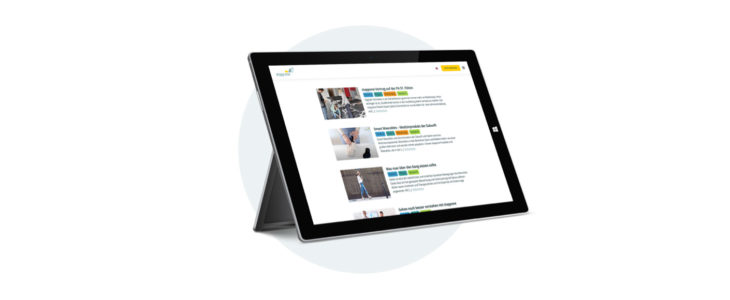Interview with UAS-Prof. Dr. Michael Iber
STAPPONE Research as part of the study “Auditory feedback in tele-rehabilitation based on automated gait classification”.
UAS-Prof. Dr. Michael Iber is responsible for everything that has to do with sound and audio at the UAS St. Pölten in the Department of Media and Digital Technologies. His scientific discipline is acoustic information design. In this context, he joined the project “Auditory feedback in tele-rehabilitation based on automated gait classification” where the original idea came from one of his numerous previous projects.

© Anna-Maria Raberger |

© Anna-Maria Raberger |

© Anna-Maria Raberger |
For this project, the researchers used STAPPONE Research. The product consists of the intelligent stappone sensor soles and the corresponding software. The soles are used to record the gait pattern and other relevant movement parameters.
What was the basic idea behind your study?
The idea was to be able to give people with gait abnormalities feedback about their gait behavior with acoustic signals. We decided to do this acoustically because the patient doesn’t have to look anywhere. For example, by using an acoustic signal through a smartphone, you can focus on walking normally without looking somewhere specific, while still receiving feedback on your gait.
A perfect example of this is driving a car, after a certain practice period we also don’t look at the dashboard anymore to know when to shift to the next gear. Our study was primarily a feasibility study – and successful.
What is the study’s background?
The original idea came from our previous projects. At that time, we used a self-developed shoe sole equipped with sensors to measure the foot pressure load. However, the precision and robustness were not comparable to the stappone sensor soles. At the same time, colleagues had achieved a rather spectacular result in the evaluation of a database with gait analysis data of different pathologies and have managed to develop algorithms on this database via machine learning. Statements about physiological and pathological gait could be made with a very high probability – for three abnormalities even regarding the cause (hip, knee, ankle).
How do the previous projects now come together in your study?
We wanted to combine the previous projects in this study with the stappone sensor soles. The goal was to make statements about the pathological and physiological gait based on the data collected by the stappone sensor soles, for example, whether deviations could be felt. We used this information directly for auditory feedback and gave it to the users as a corrective. In this way, the users had clues about how they were moving.
Do you have an example?
For example, the test subjects had to assume a static position – a lunge – and remain in this position. After some time, they began to wobble. That’s when the acoustic signal started. The test person then tried to correct himself/herself, which means trying to get back into a range where the acoustic signal stops.
What role did stappone play in your study?
The sensor soles were essential for our project, without them it would not have been feasible. We were in direct exchange with stappone the entire time. Because of their expertise in data science and machine learning, we were able to cooperate very well.
What are the advantages of STAPPONE Research?
Apart from the fact that the sensor soles are a medically certified product in Europe, they can be perfectly used for supervised therapy but also for teletherapy. On the one hand, this allows patients to train with less direct supervision during outpatient therapies, and on the other hand, they can perform the exercises at home – this is a great support especially for patients with limited mobility. Therefore, I see great potential for stappone.
We worked very well together with stappone and we will do some more projects together in the future. Therefore, I can only recommend stappone. The company has a good drive and a good network. I see a very promising future.
We at stappone are glad about the successful cooperation with UAS St. Pölten and are looking forward to many more projects.
Do you have any questions about STAPPONE Research? Contact us! We are always at your disposal.
Find us on LinkedIn and become part of our community! We keep you updated about stappone, medicine and technology!
Authors of this study were:
- Victor Adriel de Jesus Oliveira,
- Djordje Slijepčević,
- Bernhard Dumphart,
- Stefan Ferstl,
- Joschua Reis,
- Anna-Maria Raberger,
- Mario Heller,
- Brian Horsak &
- Michael Iber

